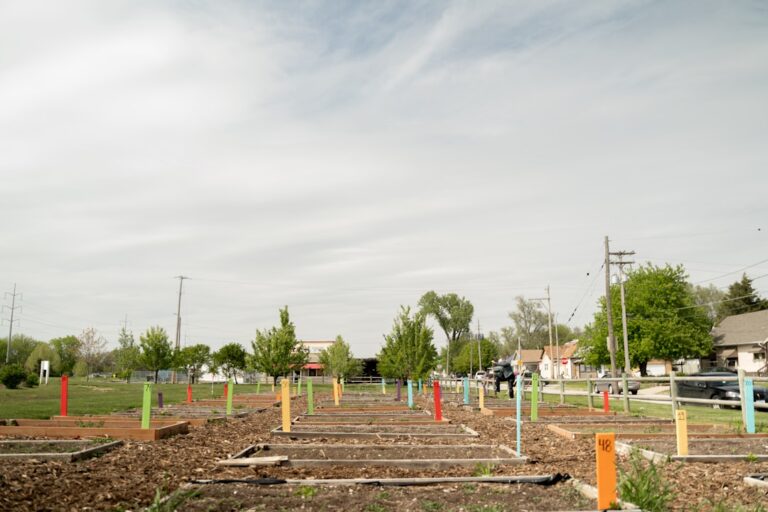Grassroots movements are often characterized by their bottom-up approach, where ordinary individuals come together to advocate for change, rather than relying on established institutions or elite groups. The term “grassroots” itself evokes imagery of the natural world, suggesting that these movements grow organically from the ground up, nurtured by the collective efforts of community members. This contrasts sharply with top-down initiatives, which are typically driven by government entities or large organizations.
Grassroots movements can emerge in response to a variety of issues, including social injustices, political disenfranchisement, environmental concerns, and economic inequalities. At the heart of grassroots movements is the principle of community engagement. Individuals who participate in these movements often share a common goal or concern, which fosters a sense of solidarity and collective identity.
This shared purpose can galvanize people from diverse backgrounds to unite and take action. The rise of social media has further amplified the reach and impact of grassroots initiatives, allowing for rapid mobilization and communication among supporters. For instance, platforms like Twitter and Facebook have been instrumental in organizing protests and spreading awareness about various causes, demonstrating how grassroots movements can leverage technology to enhance their visibility and effectiveness.
Key Takeaways
- Grass roots movements are driven by the people at a local level, rather than by established organizations or leaders.
- Grass roots movements are important because they give a voice to marginalized communities and can lead to significant social and political change.
- Grass roots movements in politics can influence policy and elections by mobilizing voters and raising awareness about important issues.
- Grass roots movements in business can challenge corporate power and promote ethical and sustainable practices.
- Grass roots movements in community development can empower local residents to address their own needs and improve their quality of life.
The Importance of Grass Roots Movements:
Grassroots movements play a crucial role in shaping societal change by empowering individuals to voice their concerns and advocate for their rights. They serve as a counterbalance to institutional power, providing a platform for marginalized voices that might otherwise go unheard. By mobilizing communities around shared issues, grassroots movements can challenge the status quo and push for reforms that reflect the needs and desires of the populace.
This democratization of activism is essential in fostering a more inclusive society where diverse perspectives are acknowledged and valued. Moreover, grassroots movements often lead to significant policy changes at local, national, and even global levels. Historical examples abound, such as the Civil Rights Movement in the United States, which was largely driven by grassroots activism.
Leaders like Martin Luther King Jr. emerged from community organizing efforts that sought to dismantle systemic racism and promote equality. The success of such movements underscores the potential of grassroots initiatives to effect meaningful change when individuals come together with a shared vision and determination.
Grass Roots in Politics:

In the political arena, grassroots movements have become increasingly influential in shaping electoral outcomes and policy decisions. Political campaigns that prioritize grassroots engagement often rely on volunteers and small donations from supporters rather than large contributions from corporations or wealthy donors. This approach not only fosters a sense of ownership among constituents but also encourages candidates to remain accountable to the people they represent.
For example, the 2008 presidential campaign of Barack Obama utilized grassroots fundraising strategies that mobilized millions of small donors, demonstrating the power of collective action in financing political endeavors. Grassroots movements also play a pivotal role in advocating for specific policies or reforms. Organizations like MoveOn.org and Indivisible have emerged as key players in mobilizing citizens around issues such as healthcare reform, climate change, and immigration policy.
These groups often employ tactics such as phone banking, door-to-door canvassing, and social media campaigns to engage voters and pressure elected officials to take action. The success of these initiatives highlights how grassroots activism can influence legislative agendas and hold politicians accountable to their constituents.
Grass Roots in Business:
| Metrics | Data |
|---|---|
| Number of Grass Roots Initiatives | 25 |
| Employee Engagement Score | 85% |
| Customer Satisfaction Rating | 4.5 out of 5 |
| Cost Savings from Grass Roots Efforts | 500,000 |
The concept of grassroots extends beyond politics into the realm of business, where it manifests in various forms such as community-supported agriculture (CSA), local cooperatives, and socially responsible enterprises. Grassroots entrepreneurship emphasizes local engagement and sustainability, often prioritizing ethical practices over profit maximization. For instance, many small businesses adopt a grassroots approach by sourcing materials locally, hiring community members, and reinvesting profits back into the local economy.
This not only fosters economic resilience but also strengthens community ties. Additionally, grassroots movements within the business sector can drive innovation and challenge established corporate practices. The rise of the Fair Trade movement exemplifies this phenomenon, as consumers increasingly demand ethically produced goods that support fair labor practices and environmental sustainability.
As a result, larger corporations are often compelled to adapt their practices to meet consumer expectations, illustrating how grassroots initiatives can influence market dynamics and corporate responsibility.
Grass Roots in Community Development:
Community development is another area where grassroots movements have made significant strides. These initiatives often focus on empowering local residents to identify their needs and work collaboratively towards solutions. By fostering a sense of ownership and agency among community members, grassroots efforts can lead to sustainable development that reflects the unique characteristics and aspirations of a given area.
For example, neighborhood associations may organize clean-up days or community gardens that not only beautify the environment but also strengthen social bonds among residents. Furthermore, grassroots community development initiatives often prioritize inclusivity by engaging marginalized populations in decision-making processes. This approach ensures that diverse voices are heard and considered when addressing local challenges.
Programs aimed at affordable housing, access to education, and public health can benefit from grassroots involvement as residents bring their lived experiences to the table. By centering community input in development efforts, these initiatives can create more equitable outcomes that truly serve the needs of all residents.
Grass Roots in Social Change:

Grassroots movements have historically been at the forefront of social change, challenging entrenched norms and advocating for justice across various spheres of society. The LGBTQ+ rights movement serves as a poignant example of how grassroots activism can lead to transformative societal shifts. From early organizations like the Mattachine Society to contemporary groups advocating for marriage equality, grassroots efforts have played a critical role in advancing LGBTQ+ rights and visibility.
These movements often rely on personal storytelling and community engagement to foster understanding and acceptance. In addition to LGBTQ+ rights, grassroots movements have been instrumental in addressing issues such as racial justice, gender equality, and economic disparity. The #MeToo movement exemplifies how grassroots activism can mobilize individuals to speak out against systemic abuse and harassment.
By creating safe spaces for survivors to share their experiences, this movement has sparked widespread conversations about consent, accountability, and workplace culture. The ripple effects of such grassroots initiatives can lead to significant cultural shifts that challenge long-standing power dynamics.
Grass Roots in Environmental Activism:
Environmental activism has seen a surge in grassroots movements aimed at addressing climate change and promoting sustainability. These initiatives often arise from local communities directly affected by environmental degradation or resource exploitation. For instance, the Standing Rock Sioux Tribe’s opposition to the Dakota Access Pipeline galvanized widespread support from environmentalists and indigenous rights advocates alike.
This grassroots movement highlighted the intersectionality of environmental justice and indigenous sovereignty, drawing attention to the need for sustainable practices that respect both people and the planet. Grassroots environmental movements also emphasize community-led solutions to ecological challenges. Initiatives such as local clean-up campaigns, tree-planting events, and educational workshops empower individuals to take action within their own neighborhoods.
org have successfully mobilized citizens around climate action through grassroots organizing strategies that encourage participation at all levels—from local events to global climate strikes. By fostering a sense of collective responsibility for environmental stewardship, these movements inspire individuals to adopt sustainable practices in their daily lives.
Grass Roots in Sports and Entertainment:
The influence of grassroots movements extends into the realms of sports and entertainment, where they can drive social change and promote inclusivity within these industries. Grassroots sports programs often provide opportunities for underprivileged youth to engage in physical activity while fostering teamwork and leadership skills. Initiatives like “Playworks” focus on creating inclusive play environments in schools, emphasizing the importance of physical activity for personal development and social cohesion.
In entertainment, grassroots movements have played a pivotal role in advocating for diversity and representation across various media platforms. The #OscarsSoWhite campaign highlighted the lack of diversity among Academy Award nominees, prompting discussions about systemic biases within Hollywood. This grassroots activism has led to increased awareness about representation issues and has encouraged industry stakeholders to prioritize inclusivity in casting decisions and storytelling.
Moreover, musicians and artists often use their platforms to amplify grassroots causes, leveraging their influence to raise awareness about social issues ranging from racial justice to climate change. Concerts organized for charitable purposes or benefit events supporting specific causes exemplify how artists can mobilize their fan bases for collective action. By intertwining art with activism, these grassroots efforts not only entertain but also inspire audiences to engage with pressing societal challenges.
In summary, grassroots movements are vital components of societal progress across various domains—politics, business, community development, social change, environmental activism, sports, and entertainment. Their ability to mobilize individuals around shared goals fosters a sense of agency and empowerment that can lead to meaningful change at both local and global levels. As these movements continue to evolve in response to contemporary challenges, they will undoubtedly remain essential catalysts for transformation in our world.
If you are interested in exploring the concept of grass roots further, you may also enjoy reading about Aristotle’s philosophy on form, matter, causation, actuality, and potentiality. This article delves into the fundamental principles of Aristotle’s philosophical thought and how they relate to the nature of reality. You can find more information on this topic here.
FAQs
What is the definition of grass roots?
The term “grass roots” refers to the most basic level of an organization or movement, typically made up of ordinary people at the local level.
What is the origin of the term “grass roots”?
The term “grass roots” originated in the 20th century and is derived from the idea of the grassroots of a plant, which are its most basic and foundational parts.
How is the term “grass roots” used in society?
The term “grass roots” is often used to describe movements, organizations, or political campaigns that are driven by the participation of ordinary people at the local level, rather than by established leaders or institutions.
What are some examples of grass roots movements?
Examples of grass roots movements include civil rights movements, environmental activism, community organizing efforts, and local political campaigns that are driven by the involvement of ordinary citizens.
What are the characteristics of a grass roots movement?
Characteristics of a grass roots movement include decentralized decision-making, a focus on local community involvement, and a bottom-up approach to creating change or addressing issues.
























+ There are no comments
Add yours